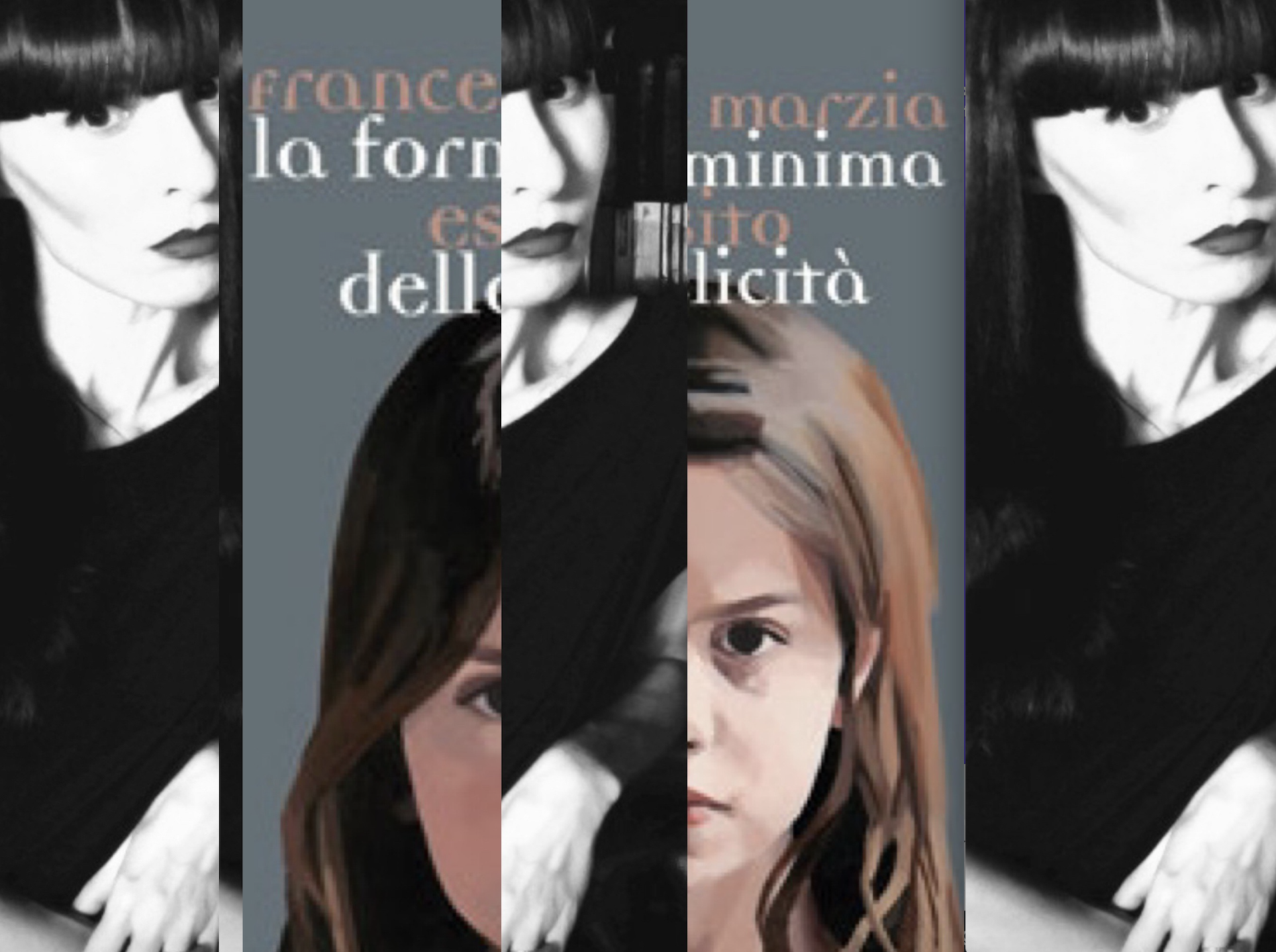
Translated from the Italian by Jeanne Bonner and Joshua Graber
Aster(ix): In the story, Autumn Lessons, you managed to express different aspects of a mother’s life – the love that can be overwhelming at times but also the way you become a different person when you’re a mother (I’m thinking of how different the character of Pami is from the narrator; it’s a Sunday afternoon but Pami is still dressed as though she is going out to the clubs and the narrator is wearing her pajamas). What were you looking to say? What ideas or moments were critical in telling the narrator’s story?
Francesca Marzia Esposito: Who knows where or what the intention for writing a story comes from when you sit down to write? The subconscious allows you to dip into your creative forces without adhering too closely to reality. Stories are important journeys made up of action and characters rotating around a central pressure point that has not been resolved.
The creative process is something that in and of itself has an inexpressible power that cannot be accessed even by the artists themselves. It’s the only way I know how to approach writing – staying ignorant to a certain extent on the rational level and moving through these images, moments, elements of existence that strike me, that are significant for me because they are on my radar. When you write, you draw from a hierarchy of interests that is very subjective. They are part of you, beyond your biographical facts. I always say nothing is more autobiographical than what I invent [as fiction].
Aster(ix): Can you talk about what inspired you to invent these characters, these situations, this story?
FME: I don’t really know exactly. For this story, I began imagining a couple that was composed of a mother and a son. Ideas don’t travel in a linear way – they don’t have a beginning or an end, they exist simultaneously and they overlap. Typically, if I am able to write about them, it’s because they’ve been percolating inside, in the darkness of my head, long enough.
Aster(ix): Here we’re dealing with a short story. But you have also written a novel. Can you compare the effort required for writing a longer work versus what’s required for a short story? And beyond the work you put in, how do you approach these two different types of writing?
FME: I don’t have an exact idea about length or the story’s eventual development while I’m working on it. The initial impulse – in terms of whether I want to write something short or long – inevitably influences the narrative arc. I start with topics that interest me, that are part of me, that I’m obsessed with and they are then converted into characters that are put into a particular situation, often a room or a street.
Stories and novels are forms of writing with different potential, obviously, but they both provide me with an opportunity to experiment so one informs the other. That means, sometimes I will re-use a character from a short story whose potential hasn’t been exhausted – in fact the character has broader potential. For example, one of the chapters from my novel La forma minima della felicità (published by Baldini & Castoldi in 2015), had been written as a short story years before but I was able to rework it, and it folded into the plot of the novel. Writing is like a construction site; things come in and out of various stories, transformed because the underlying ideas remain valid, reflecting intrinsic focal points.
Theoretically, writing a novel should take longer. But in reality, the time it takes to write isn’t at all tied to the length of the given genre form. There are stories I wrote years ago that I tinker with every now and again, only to put them away in a drawer again.
The one thing I notice perhaps is that the fragmentation of the working process occurs more with the short stories, while for a novel, I need a more cohesive gestation period for the writing, at least for the early drafts.
Aster(ix): When do you write? Early morning? In the evenings? I’m also curious how you balance the demands of everyday life with the requirements of your writing life. Can you address that a little?
FME: I am a creature of habit so I write in the morning. After dinner, I re-write or take a second look at what I’ve written. First drafts I typically write during the summer; August is my favorite month. It’s the month of vacations, which allows me to a large, unscheduled block of time that I can dedicate completely or almost completely to writing. Then from September on, I begin revising or at least until now, that’s how I’ve done it.
For example, I began writing La forma minima della felicità during the summer of 2011; I was at the seaside in Sardegna and every morning I’d stay in to write. I enjoyed working on what was a quintessentially urban story, a winter tale, while watching from my balcony as people would come and go in sandals. Even the novel I am working on now comes from a draft I completed one August. I’d stayed at home, and I would write in the shadow of the sunny, semi-deserted streets of Milan.
Aster(ix): Could you recommend some Italian writers other than Ferrante? Who we should pay attention to? Who do you think deserves to be translated?
FME: I don’t make distinctions between writers. Writing has to do with identity, which is a complex and multiform thing. The difference between men and women is only one of a multiplicity of variations. We write from the shadow of a complex, multifaceted personality. This complexity is linked to our worldview, which is bound to our obsessions, our fears, our discomfort, our passions—we are much more than a categorical gender. Marking a distinction, even if by choice, of women writers—of “women’s’ writing”—is an obsolete, but unfortunately persistent idea. It implies a boundary between canon A and canon B: between strong writing and weak writing. That being said, the panorama of Italian fiction is very heterogenous. Some books have greater success with the public. Some very beautiful texts remain on the margins. These realities coexist. It would be better to talk about individual books than about writers, since we are talking about young authors who have not yet chosen a narrow path. We are all writing, forming our styles, figuring out who we are as writers. Only time will tell.
(You probably wanted me to name names. I’m sorry. The problem is that I know many of them personally. If I highlight one and omit others, it could be bad.)
Aster(ix) What do you think of the way Ferrante has become popular? Why do you think she is so popular in the United States?
FME: It is always very difficult to trace the reason why one writer has managed to find an audience with the general public. Of course, it has to do with the skill of the writer, with the ability to capture, through the stories you choose to tell, the spirit of the age. It also depends largely on creating a product for the bookseller, located in a large field of accessibility. Ideally, we might draw a line with diametrically opposed extremes: on one end, experimental literature and, on the other, a more traditional, commercial narrative. Magically, Ferrante’s work lies somewhere in the middle.
Aster(ix): What are some of your influences in writing?
FME: My father taught me to love books. Kafka’s Metamorphosis was crucial for me as a young girl. I was impressed with the imaginative power of the story. I think it was the first moment when I became aware of the infinite possibilities of visions that reading allowed me to have. Another, which I found as a teenager, was Crime and Punishment. Then In Search of Lost Time. Years later, I read Journey at the End of the Night. I’ve always enjoyed reading. For a long time I did not write a thing. I was not born with a knack for writing. I liked to read, and I admired anyone who could write as though they heard God . Many authors and individual books have formed my literary taste, the mental landscape from which I write. The writers I admire are like columns in the middle of my head, columns that function not only to support a space, but also to enlarge it. Reading opens up space, it reconfigures the geography around us. I’ll try to give you some names, but making a full list would be difficult, if not impossible: Kafka, Celine, Bernhard, Dostoevsky, Camus, Beckett, Pinter, Chekhov, Artaud, DeLillo, Roth, Wallace, Didion, Plath, Sanguineti, de Beauvoir, Bolaño, McCarthy, Pavese, Gadda, Sartre, Fante, Kawabata…and I could go on.
Aster(ix): What do you love about the novel, as a genre? Do you work in other genres?
FME: The novel is the form that is the most natural for me. But sometimes I write stories. I like the narrative essay—to speak technically of dancing, for example. However, the fact remains that fiction allows you to deal with topics that interest you on a transverse narrative line. The characters, the time, and the place create a force greater than they might if the issues were dealt with directly. It allows you to approach certain things diagonally, and I find a lot of freedom in this.
Questions by Jeanne Bonner and Angie Cruz
Francesca Marzia Esposito is the author of the novel, La forma minima della felicità, which was published by Baldini & Castoldi in 2015. She lives in Milan where she teaches dance. She studied film at the Catholic University of Milan. Her short stories have appeared in Granta, GQ and other publications.
Read Esercizi d’ Autunno








